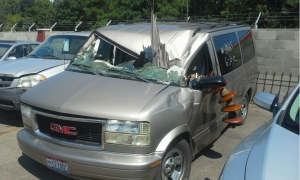 I recently wrote an auto insurance primer, and you can read it right here.
I recently wrote an auto insurance primer, and you can read it right here.
My goal as The Insurance Problem Solver is to educate consumers like you about insurance. If you need more help, The Insurance Problem Solver is your resource.
Auto Insurance Primer
In part one of An Auto Insurance Primer I explained that some types of automobile insurance are required by law in every state. We also considered that automobile insurance may be needed for other reasons because there is a loan outstanding on the car. In that case, the insurance is required to ensure that there is money available for repairs and therefore, to preserve its value.
In this part two, we will discuss the general types of motor vehicle insurance that are available for private passenger cars. You should understand that different kinds of insurance coverage may be available or required by law for vehicles used for commercial purposes. Also, depending upon the state in which an insurance policy is issued and the vehicle is registered, the names of the insurance coverage may differ. Therefore, we’ll discuss the fundamentals of an automobile insurance policy, and acknowledge the valuable input of the Insurance Information Institute.
Types of Personal Automobile Insurance
- Bodily injury liability insurance. This is a type of third-party coverage. That term means that it pays benefits to a person who is injured because of the negligence (carelessness) of an individual insured under the policy. Some amount of this kind of coverage is required by law. Like other types of liability insurance, the insurance company will also assign and pay an attorney to defend you if the fault for the collision is contested in a lawsuit.
- Property damage liability insurance. This is also third-party coverage. It pays benefits to a person or entity whose property is damaged because of the negligence of the individual insured under the policy. It, too, is usually required by law, and the insurance company will hire a lawyer for you if responsibility for the damages is contested in a lawsuit.
- Personal Injury Protection (PIP) coverage. PIP is a form of first-party coverage. PIP insurance pays benefits to the person who bought the coverage, members of his or her household, and occupants of the insured motor vehicle who are hurt in a collision. PIP is sometimes called “no-fault” coverage and is required by law. It pays a portion of the medical expenses and lost wages that result from an automobile collision without regard to fault.
- Collision coverage is first-party coverage and pays the cost of repairing your vehicle if possible to do so. Collision coverage applies when damage results from an accident with another car or object. This coverage is sold subject to a deductible ranging anywhere from $250-$1,000.
- A deductible is the amount of the repair cost that you have to pay; the insurance company pays the rest. In general, a higher deductible will result in a lower premium for collision coverage. The insurance company may try to recover the amount it paid for you from the other party(ies) through a process called subrogation, but the other party(ies) have to be at fault for your insurance company to recover. If it does recover, your deductible will be refunded in whole or in part. This is not a kind of automobile insurance but is an element of the collision and comprehensive coverage.
- Comprehensive coverage is another first-party coverage, but it is different from collision coverage. It pays for various kinds of damage or loss, such as vandalism to or theft of the motor vehicle, windshield damage and also for some unusual events like hitting an animal. Comprehensive insurance is also sold with a deductible, but some insurance companies waive the deductible if the damage is to the windshield. This is because windshield damage may create a safety hazard.
- Uninsured motorist coverage. This is sometimes called just “UM”. It is first-party coverage that pays damages to you or a family member when injured by the fault of another driver who does not have liability insurance or when you are hurt in a hit and run incident. Related to this is underinsured motorist coverage. If applicable, it can pay when the individual responsible for the collision does not have enough liability insurance to compensate fully you or a family member for the full extent of injuries.
I will be covering many areas of insurance to help simplify and clarify things in this complex arena. I plan to do more like an auto insurance primer so you are clear what you’re buying auto insurance for and what’s covered in the event of a collision.

[…] Automobile and health insurance policies come with ID cards to be used as proof of insurance. Always carry one with you. If someone else is insured under the policy, he or she should carry one, too. Change out the cards when you get new ones, because if you have to show proof of insurance, expired cards don’t count. That’s another reason to open mail from the insurance company. […]